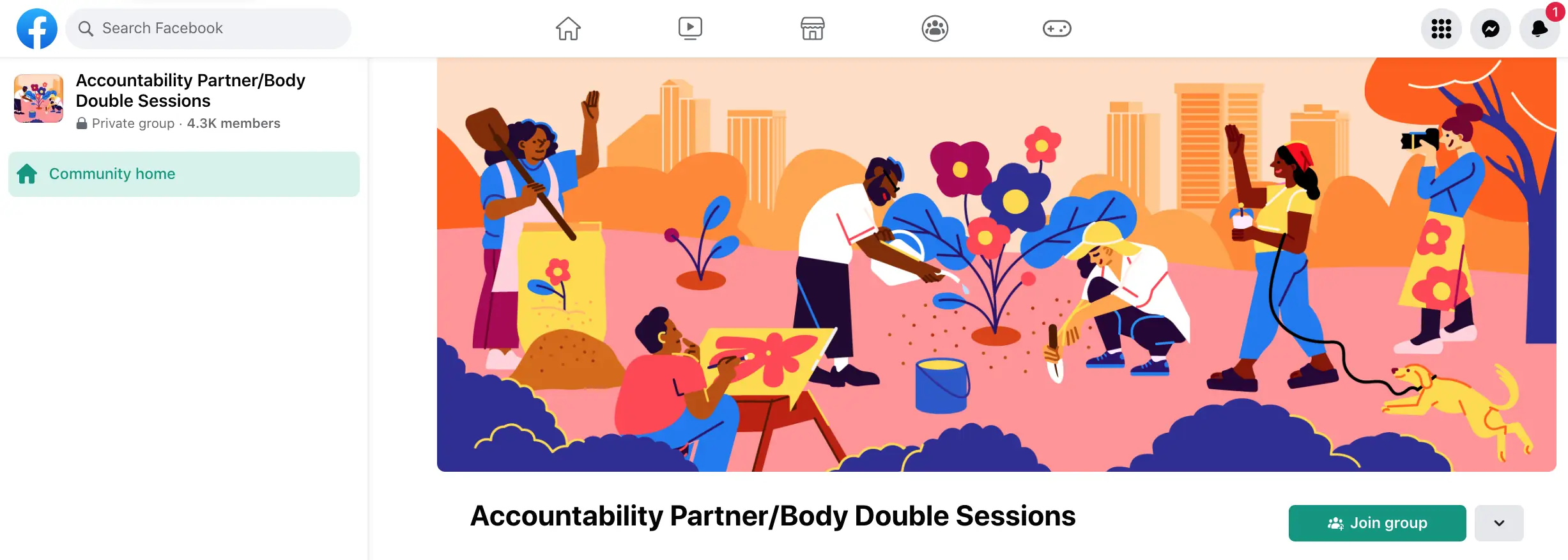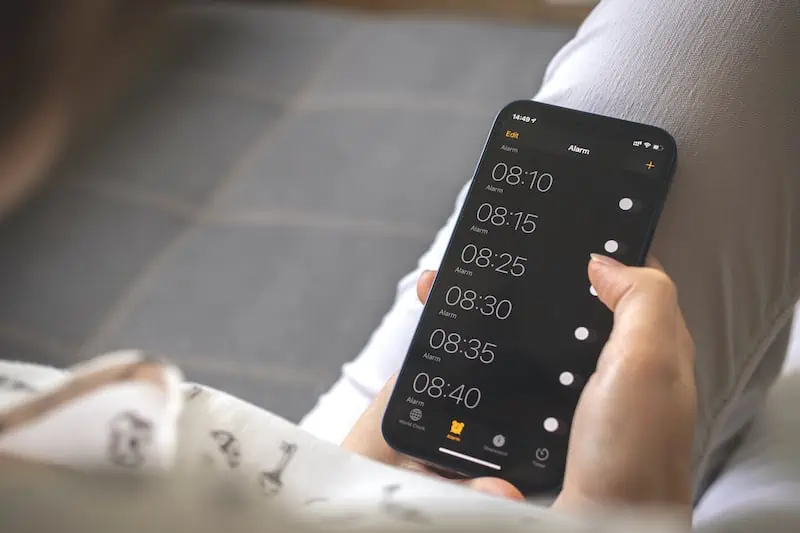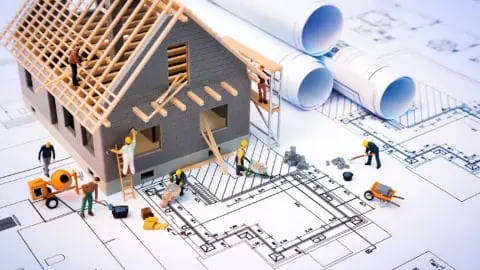101 Guide To Working From Home With ADHD
Posted in: I'm Moving, Apartment Life, OrganizationWorking in an office comes with plenty of distractions. But working from home often offers an even bigger cornucopia of distractions.
And any and all of it is particularly challenging if you have (or suspect you have) Attention Deficit Hyperactivity Disorder (ADHD). If you work from home and struggle to stay focused on your work, or if maybe you’re curious if you could optimize your work days, here are some must-knows to create a home work environment that supports a more productive day.
What is ADHD?
How To Work From Home With ADHD in 5 Steps- Learn your ADHD-type & treatment plan
- Build a distraction-considerate space
- Make a paper list & ‘SMART’ goals
- Group tasks into time chunks (with alarms!)
- Enlist an accountability buddy
What Exactly Is ADHD, Anyway?
ADHD is a neurodevelopmental disorder that affects both children and adults.
Sure, everyone gets distracted. But ADHD is characterized as a PERSISTENT pattern of inattention, hyperactivity, and impulsivity that interferes with daily functioning and development. Simply put, ADHD brains like mine cannot properly filter most information that is constantly bombarding our brains, including the environment and internal thoughts and feelings.
“…your brain is naturally set up to keep you outside a state of flow. Don’t get discouraged when things go off the rails (and they always will).”
But having ADHD doesn’t make you any less intelligent or capable than anyone else! It just means your brain is wired differently. But because it is, even when successful, ADHD brain will burn energy at a far greater rate than most people when attempting to hone attention, which often leads to additional health and behavioral complications, in addition to struggling with tasks.
Doctors divide ADHD into three (3) subtypes:
- Predominantly Inattentive Presentation: Difficulties with maintaining attention, organization, and follow-through on tasks. People with this subtype may struggle to complete tasks, may make careless mistakes, and generally have difficulty staying focused on conversations or activities.
- Predominantly Hyperactive-Impulsive Presentation: Excessive fidgeting, restlessness, difficulty waiting their turn, and interrupting others. People with this subtype may struggle with impulse control and can even be prone to accidents.
- Combined Presentation: A relatively equal amount of symptoms from both inattentive and hyperactive-impulsive presentations.
The exact cause of ADHD is not fully understood, but research suggests that a combination of genetic, environmental, and neurological factors may contribute to its development. Diagnosis typically involves a thorough evaluation by a mental health professional, and treatment may include a combination of behavioral therapy, medication, and support from family, educators, and/or therapists.
How To Work From Home With ADHD in 5 Steps

1. Learn your personal ADHD-type and potential treatment plan
It really helps to understand how YOUR brain isn’t filtering stimulus, as well as what kinds of stimulus you deal with every day. Are you more likely to calmly zone out, or are you more prone to hyperactively jumping from thing to thing, on (and off) your to-do list?
A doctor will help find out your patterns, as well as cue you in on how ADHD may be impacting other facets of your life. Schedule a conversation with a medical professional about how your symptoms or feelings present in day-to-day life — especially while trying to work. In addition to helping you obtain a formal diagnosis type, if you’re over 18, you may also be prescribed medication if a doctor thinks it’ll help manage your personal ADHD symptoms.
These medications can include:
Stimulants
- Stimulantsamphetamines (e.g., Adderall and Vyvanse)
- Methylphenidate (e.g., Ritalin and Concerta)
Stimulants boost and balance levels of the brain’s neurotransmitters, helping reduce outside stimulus’ effect on the brain. For ADHD people, it can give you that “zoned-in” kind of feeling. As with any medication, excessive use or abuse can lead to negative side effects, such as increases to blood pressure, heart rate and body temperature, as well as potential decreases in sleep and appetite. Extreme abuse can even lead to issues such as paranoia and stroke. You can learn more about the side effects of stimulants from the National Institute on Drug Abuse here.
Non-stimulants
- ADHD-specific non-stimulants (e.g., Strattera and Qelbree)
- Antidepressants (e.g., Wellbutrin and Effexor)
- Blood pressure medications (e.g., Tenex and Catapres)
A non-stimulant may be prescribed instead of a stimulant when you can’t take stimulants for health reasons, if you work nights, if you have previous medication abuse concerns, or simply if a medical professional wants to see if results are possible with a lesser impact on the body.
“…whether you’re a new student, or a corporate CEO, a tangible, paper to-do list is the best weapon against digital distraction; it’s the only thing I use.”
Keep in mind that medication is just one piece of the puzzle. Counseling is also an important component of treating ADHD. Therapy can help you improve skills such as time management and organization, learn to reduce your impulsive behavior, grow your self-esteem, and way more awesome stuff.
2. Build the ultimate distraction-considerate space
As you probably know, it’s very easy to get distracted at home. An important next step is creating the space that will set you up for success.
Write out your “distraction inventory”
What stuff immediately precedes any action that isn’t your work? For me, it’s hearing my partner’s footsteps up and down the hall, the dog’s barking every time someone walks past the living room window, and various notification noises from my phone. Make your own list! Spend a day or two shamelessly jotting down a checkmark every single time you physically stop working, coupled with happened immediately before you stopped. Afterward, you will have a literal list of stuff to eliminate or minimize.
Pick a no-traffic area to work
Some people may be fine with setting up their workstations at the kitchen table or in a shared room. However, if you have ADHD, it’s extremely important to create a space that’s just yours, ideally like a spare bedroom at the end of the hall. High-traffic areas, such as the fridge or near a shared bathroom, will ultimately steal hours from you each and every day.
Cut out auditory and visual problems (and introduce auditory solutions!)

It’s critical to cut out as much noise and visual distraction as possible. Simply having on noise-canceling headphones can be a lifesaver, but if you prefer some background noise, consider playing light music (genres like classical, 8D, or binaural beats are favorites in the ADHD community), or running a fan or white noise machine. I also recommend podcasts specifically made for people with ADHD, such as “Faster Than Normal“ and “Hacking Your ADHD.” And as painful as it is to hear this, you should be as far away from TVs, video games, mirrors, or anything else that you know will pull your attention away from work. In many cases, it’s a good idea to leave your phone in another room so you aren’t tempted to check it often. You can even install a social media blocker such as AppBlock or Freedom to lock yourself out of distracting sites during work hours. And even if your phone isn’t blocked or put away, at least turn off notifications so you aren’t tempted to check an email or get involved in a Slack conversation when you’re in the middle of a good flow.
Finally, be sure to set boundaries with your family; ask that they not bother you between certain working hours unless absolutely necessary! Remember: Your goal is to REPLACE the dopamine you get from all that stuff with DIFFERENT things (that will GREATLY reduce your stress)!
Create dedicated areas for different tasks
Sitting at a computer all day is mentally exhausting and not so great for your health. It can help to have a couple “stations” set up in your office where you can physically change positions. For example, I move to my comfy armchair or my sofa when I need to do lighter tasks, such as reading or organizing.
It’s gotta be comfortable!
Speaking of comfort, it’s important that your body feels comfortable and relaxed (just not sleepy). A good office chair that supports posture is doubly important for ADHD people. You might find that a standing desk helps reduce fidgeting, so it’s worth trying to work while standing at least once. Also make sure the lighting where you work is bright, but not harsh (natural light from windows is ideal).
It’s worth noting that neutral wall colors like blue, green, or light brown help with focus, as do pleasant scents. If your office doesn’t sound like this, consider a mini makeover to support your concentration.
3. Every morning, make a paper list with ‘SMART’ goals
First off, whether you’re a new student, or a corporate CEO, a tangible, paper to-do list is the best weapon against digital distraction; it’s the only thing I use. Keep your list in a visible location — like a bulletin board around your desk or on your monitor — to provide a constant visual reminder of what needs to get done. (It can also be easily personalized with colors, symbols, or other visual aids that can help you stay organized.) I find the tactile nature of writing and crossing off tasks especially satisfying and motivating!
What are “SMART” goals?
Secondly, “SMART” goals are going to be far more helpful than a normal list item will be. SMART goals are checklist items that are:
- Specific
- Measurable
- Attainable
- Relevant
- Timebound
What the heck does that mean? Well, in other words, every item on your to-do list ideally should be,
- As PAINFULLY specific as you can write it
- Able to be measured (usually with some kind of number)
- Actually possible to accomplish
- Directly linked to another goal
- Limited to a timeframe
Often, a simple “Respond to Ken’s email today” will work great. But an example of a less helpful to-do item on your paper list might be,
“Get paper done.”
A better way to write any complex to-do item for an ADHD-to-do list (with SMART markers added for you here) might be,
“I will start an outline for a task that my boss asked me to do, and it will be built out of four (or five?) different sections, which will be compiled into one report [SPECIFIC]. Each of these sections will get done within a certain timeframe this week that I will strictly adhere to. [MEASURABLE] I will finish compiling each section I will need to write about by the end of today — Monday. I will have one new section written (20%) every day, beginning Tuesday. I will have ALL sections 100% written and linked together by the end of the week — Friday. The overall goal is to complete and email a cohesive document to my boss within one week [TIMEBOUND]. The report will have everyhing we all need, pushing along this project so my team can meet their own goals, helping me be a great teammate. [RELEVANT]. [OBTAINABLE]
4. Once you have your list, group tasks into more specific time chunks (with alarms!)
Even with a great list and medication, it’s not realistic that you will remain hyperfocused indefinitely. You need to build some guardrails. As eluded to above, ADHD brains do much better when they work in defined bursts with obtainable goals, as that provides much-needed breaks after you get a boost of dopamine. This is because ADHD people tend to burn through their energy rapidly, and are biologically deficient in dopamine. One classic method is called the Pomodoro Technique. It generally involves working in 25-minute segments.
Just set a timer, then commit to focusing on one of your tasks before it goes off. When the timer goes off, you can stand up and stretch, grab a snack, or go work on something low-priority. (Don’t forget a timer to start again!) If you have one, try calling out to your Alexa, Siri, or Google to set a reminder, instead of breaking your concentration (or worse, forgetting about it completely). There are also ADHD apps that claim to help with time management you can try experimenting with, but I find that nothing is easier (or cheaper) than simple paper coupled with a detached buzzer.
5. Enlist a buddy to hold each other accountable

Don’t have an online coworker? (Or does that sound weird?) There are actually moderated Facebook groups like this one you can ask to join to find people that will help keep you on the right cadence with your work tasks!
The above is what I find to be the most structural, basic needs for an ADHD brain trapped within a demanding workflow, like mine. But there are definitely a lot more avenues to explore if you’re interested, including stuff like scheduling walks and/or exercise, changing what you eat, learning how to clean your space, medication combinations, meditation, YouTube and TikTok ADHD videos, amazing books, and much, much more!
At the end of the day, remember this: your brain is naturally set up to keep you outside a state of flow. Don’t get discouraged when things go off the rails (and they always will).“ Observe your work behaviors without any judgment, then do your very best the next day. You’ve got this!











